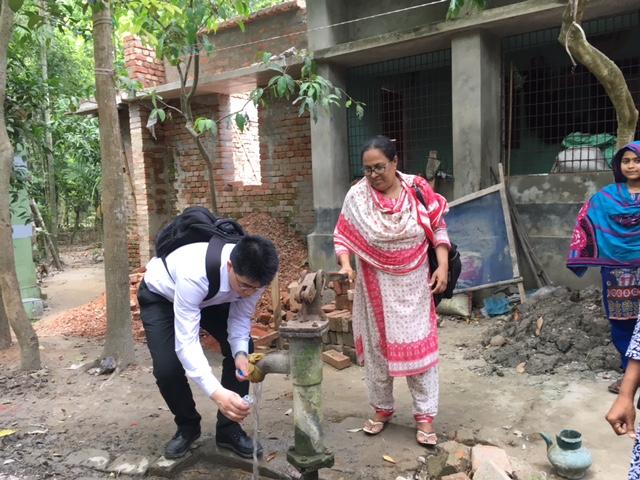Smartphone-based biosensor to tackle arsenic poisoning
A smartphone-compatible biosensor could help millions of people avoid drinking water contaminated by arsenic.

The portable device uses bacteria to detect unsafe arsenic levels. It attaches to a smartphone and generates easy-to-interpret patterns, similar to volume-bars, which display the level of contamination.
In resource-limited countries there is a lack of sufficiently skilled personnel and healthcare facilities to test water for contamination.
At a cost of less than 30 pence per test, the biosensor could replace current arsenic tests that require specialist laboratory equipment or expensive portable test kits that produce toxic chemicals.
Arsenic is naturally present in the groundwater of a number of countries, such as India and Bangladesh. UNICEF reports that arsenic contaminated drinking water is consumed by more than 140 million people worldwide.
Long-term exposure to unsafe levels leads to skin lesions and cancers, and is linked to 20% of all deaths in the worst affected regions.
Researchers at the University of Edinburgh developed the biosensor by altering the genetic code of the harmless bacteria Escherichia coli, to trigger them to produce fluorescent proteins in the presence of arsenic.
Water samples are fed into the clear, plastic device containing bacteria with different levels of arsenic sensitivity, seeded in a pattern that produces volume-bars.
The team were able to precisely control the bacterias’ sensing ability, boosting it up to 5000 fold, by adding genetic components that act as amplifiers when arsenic is detected.
The development tackles a key problem with existing biosensors, which are difficult to use and are not sensitive enough for real-world conditions.
To tackle concerns about the modified bacteria escaping the device, the team trapped the bacteria using internal chambers or suspended them in a gel.
The approach could be used to develop ultrasensitive biosensors with many uses, such as detecting other environmental toxins, diagnosing diseases or locating landmines, researchers say.
The study published in Nature Chemical Biology, was funded by BBSRC, Leverhulme Trust and Wellcome.
We have tested our sensors with water samples from wells in a local village in Bangladesh. The arsenic levels reported by the sensors are consistent with lab-based standard tests, demonstrating its potential as a new low-cost, easy-to-use monitoring tool in the field.
Our signal amplification method can also be used to develop other bacteria-based sensors for a number of environmental contaminants such as pesticides.

